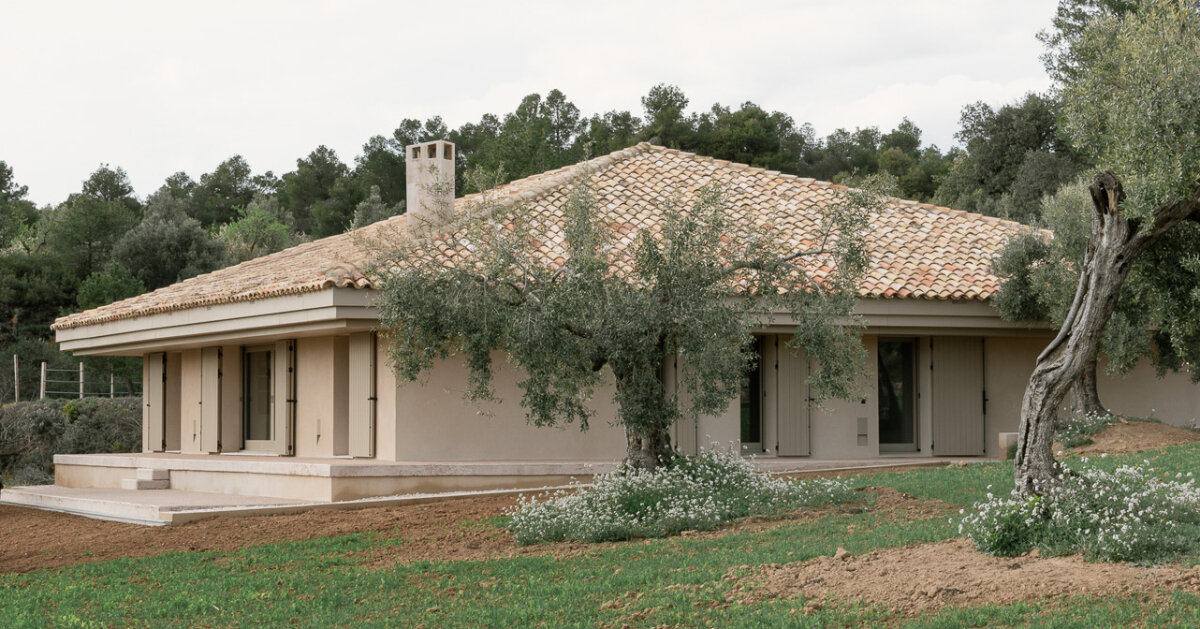Casa EF takes shape in rural Spain
Casa EF responds directly to its agricultural surroundings in Valderrobres, Spain, where the olive trees and vineyards that define the landscape have inspired the spatial and material decisions of the project. The single-storey home designed by MDBA Architects is conceived in tune with the rhythm of the terrain, as a quiet intervention: low, linear, and grounded. The material palette enhances this connection as it remains natural and regionally sourced, bringing together lime plaster, untreated wood, and stone — all of which harmonize with the soft, muted tones and textures of the surroundings.
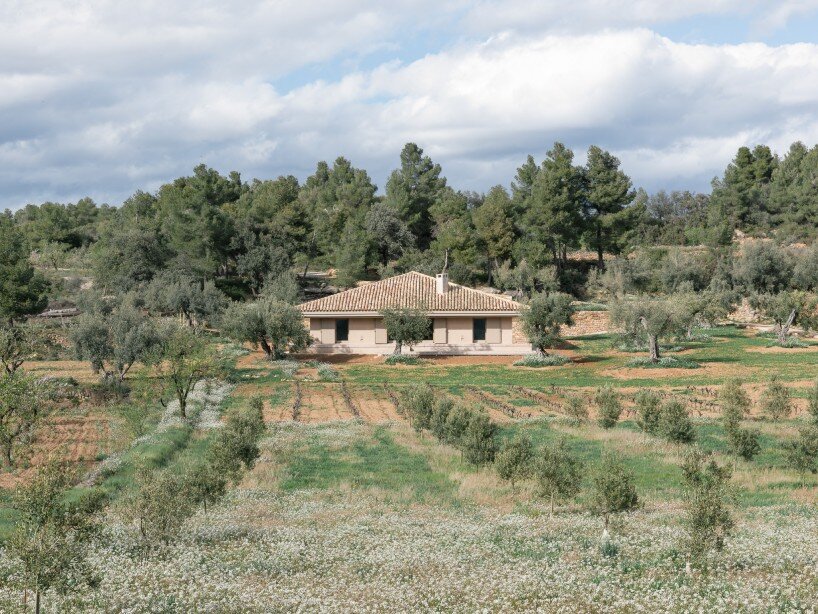
all images by Simone Marcolin
MDBA shapes the countryside home with local materials
For the team at MDBA Architects, a key challenge was to create a home that felt intimate despite the openness of the site. Casa EF then remains low to the ground and nestles into its topography, using native vegetation to frame views and provide shade. Its low-profile volume, along with large glazed openings and skylights, emphasizes the indoor-outdoor connection and invites natural light deep into the plan.
Within, the house is composed around a central axis that serves as both a circulation spine and a visual frame, organizing the floor plan into three distinct zones: a private bedroom wing to the west, a guest wing to the east, and a central shared core housing the kitchen and living spaces. Its linear organization fosters a sense of flow while balancing privacy and community. The structure is built using reinforced concrete with lightweight internal partitions, allowing for future flexibility as the needs of its residents shift. Passive design strategies are also implemented throughout to reduce energy consumption, including cross-ventilation, optimal solar orientation, and thermal mass.
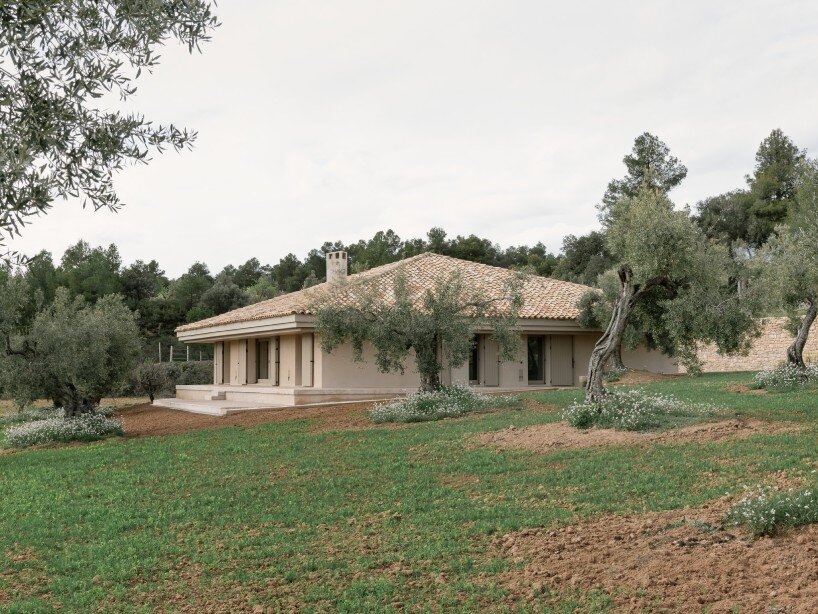
Casa EF responds directly to its agricultural surroundings in Valderrobres, Spain
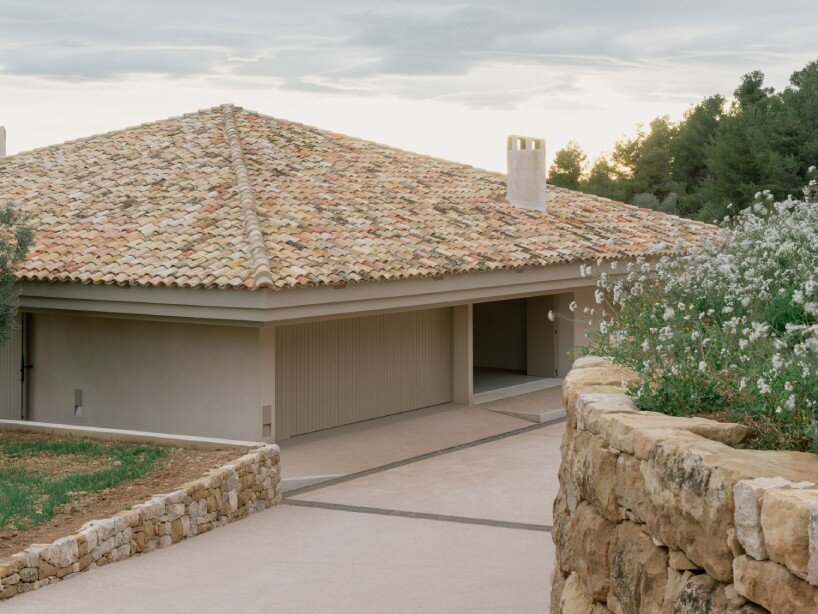
the single-storey home is conceived in tune with the rhythm of the terrain
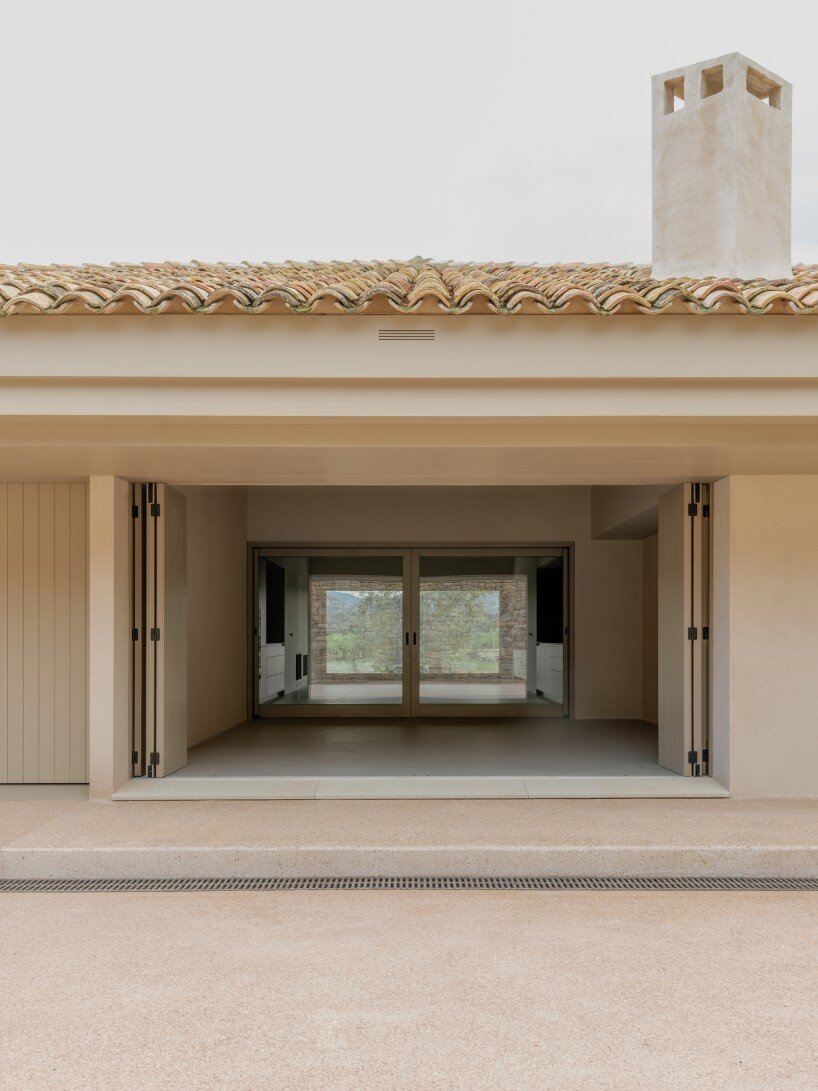
designed by MDBA Architects
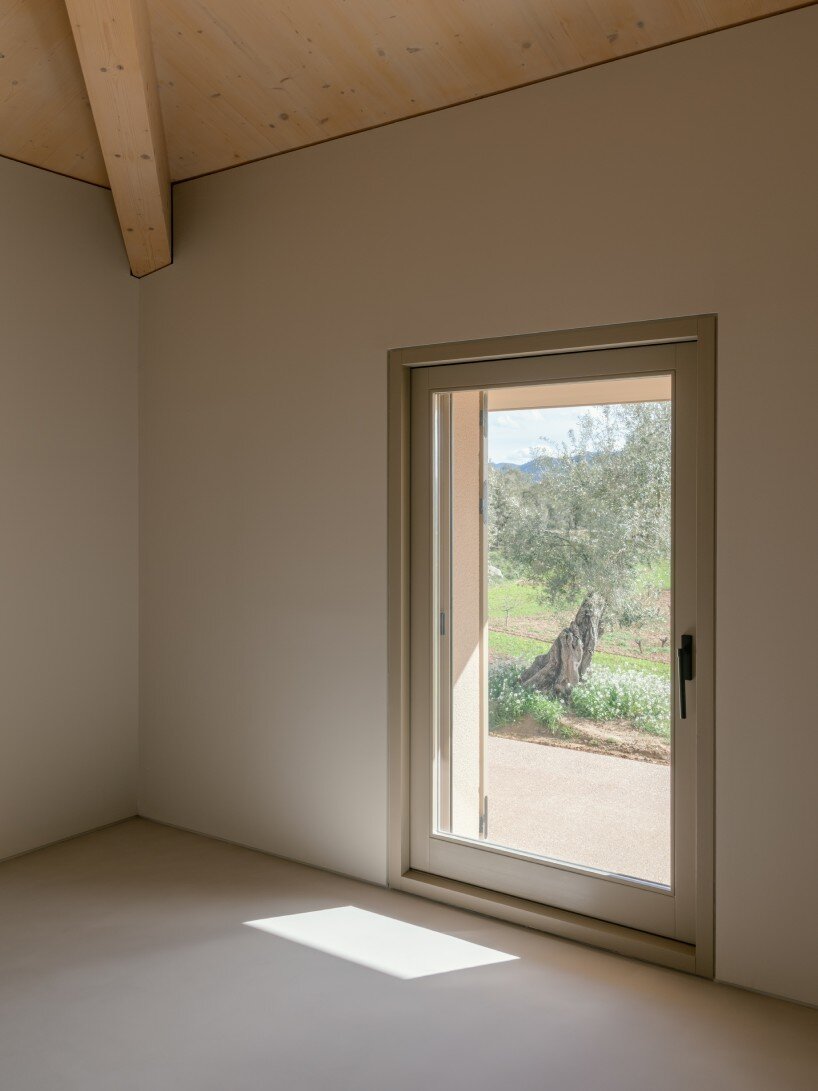
the house is composed around a central axis that serves as both a circulation spine and a visual frame
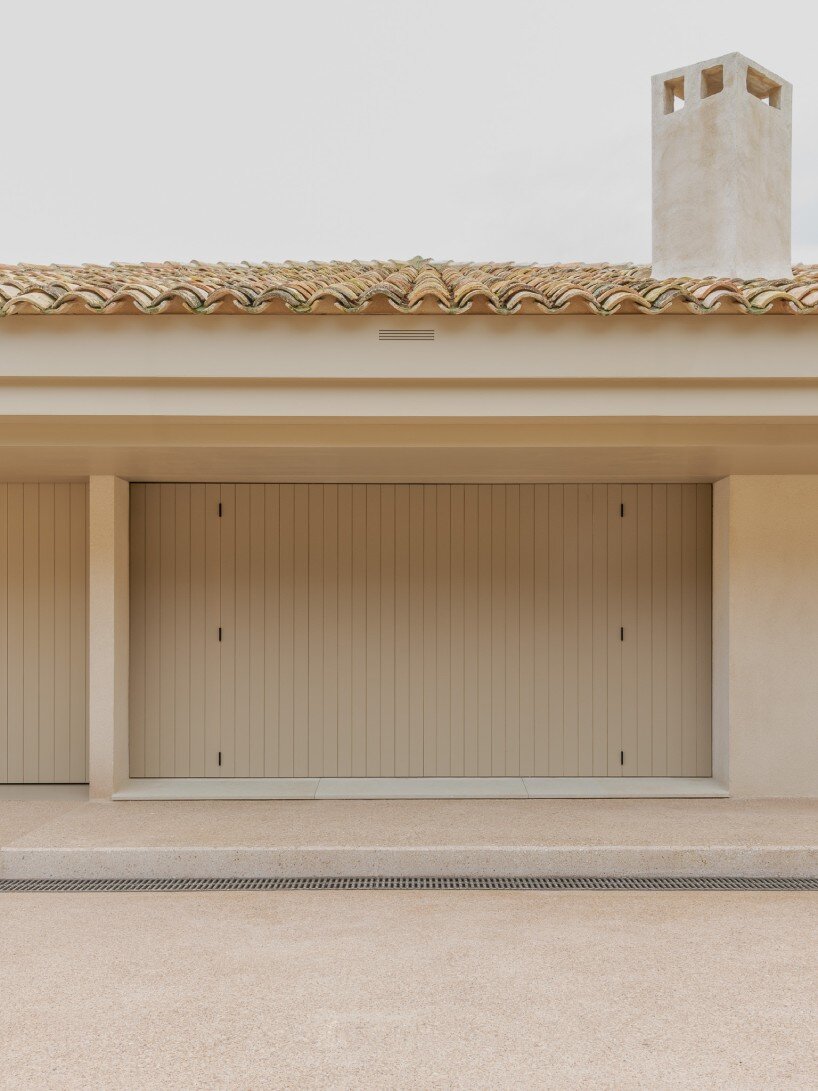
materials are natural and regionally sourced, such as lime plaster, untreated wood, and stone
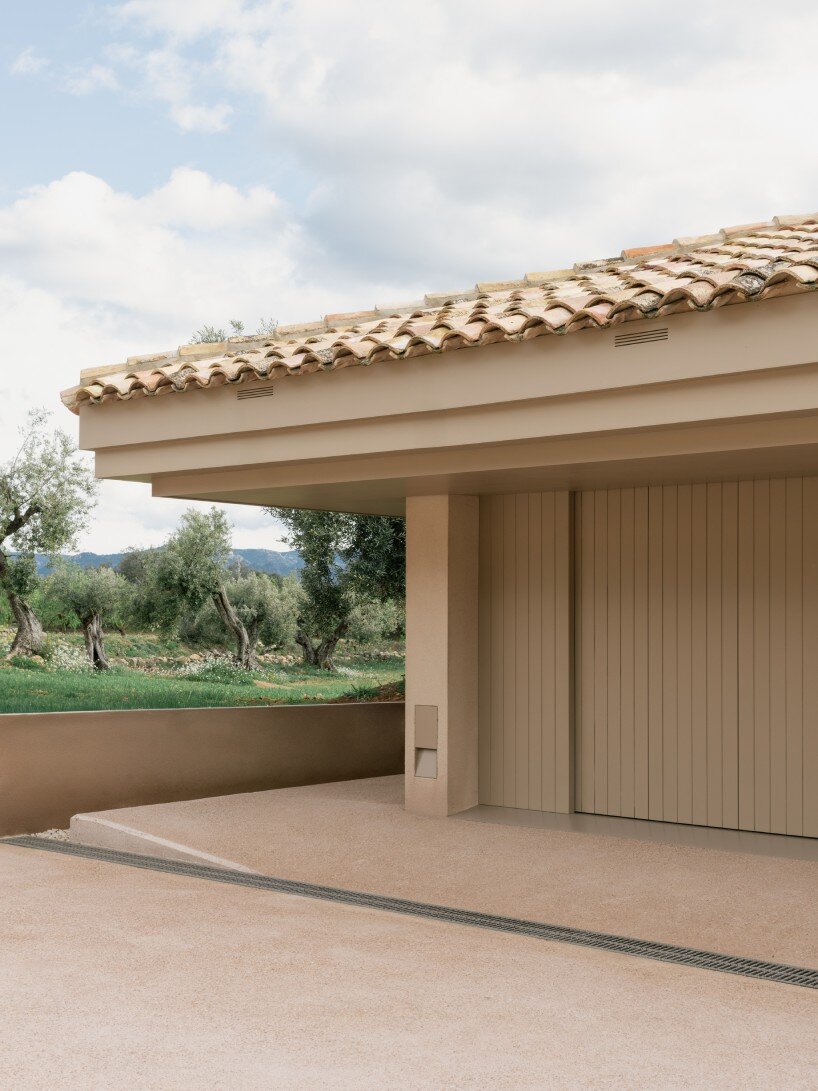
the structure is built using reinforced concrete with lightweight internal partitions
